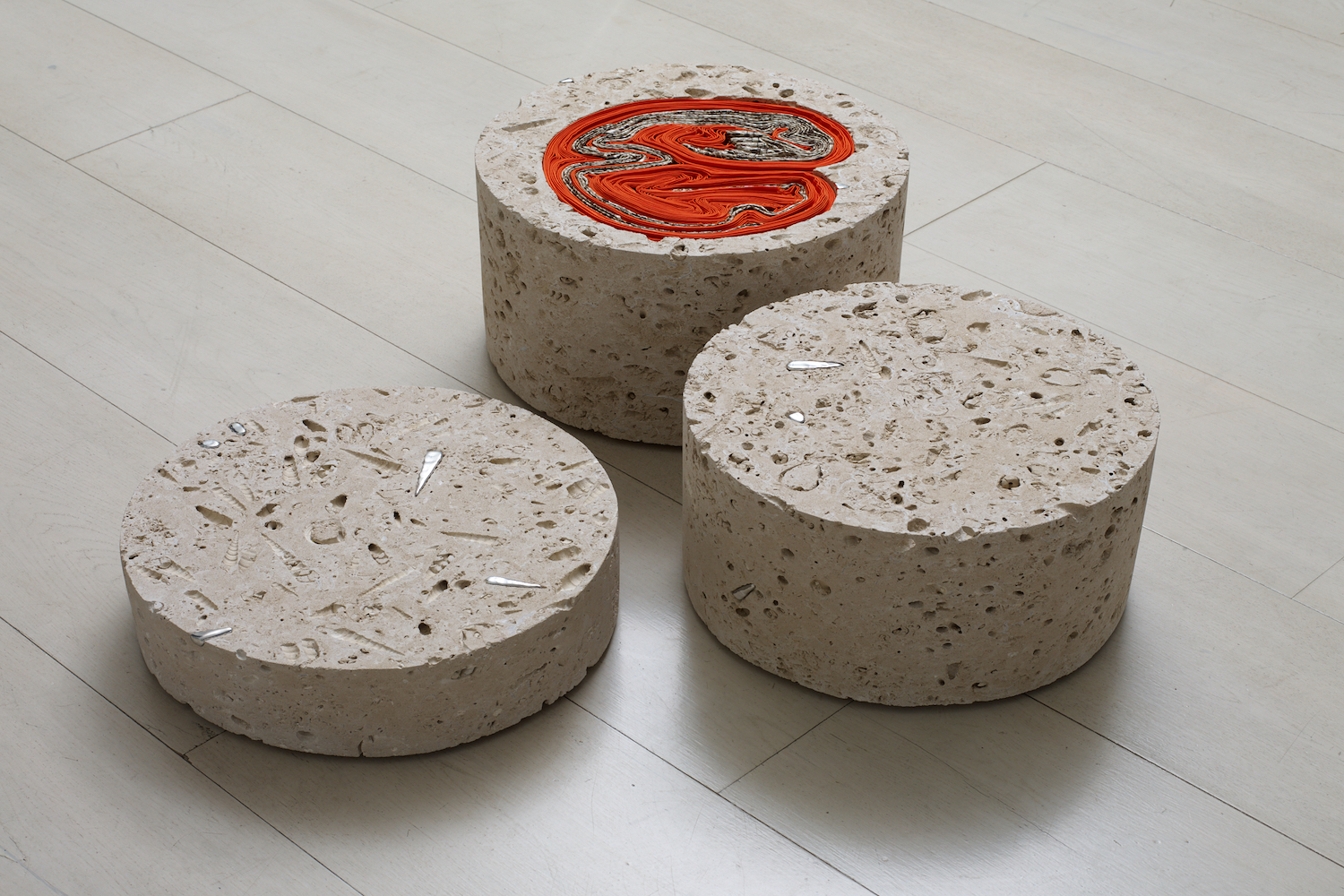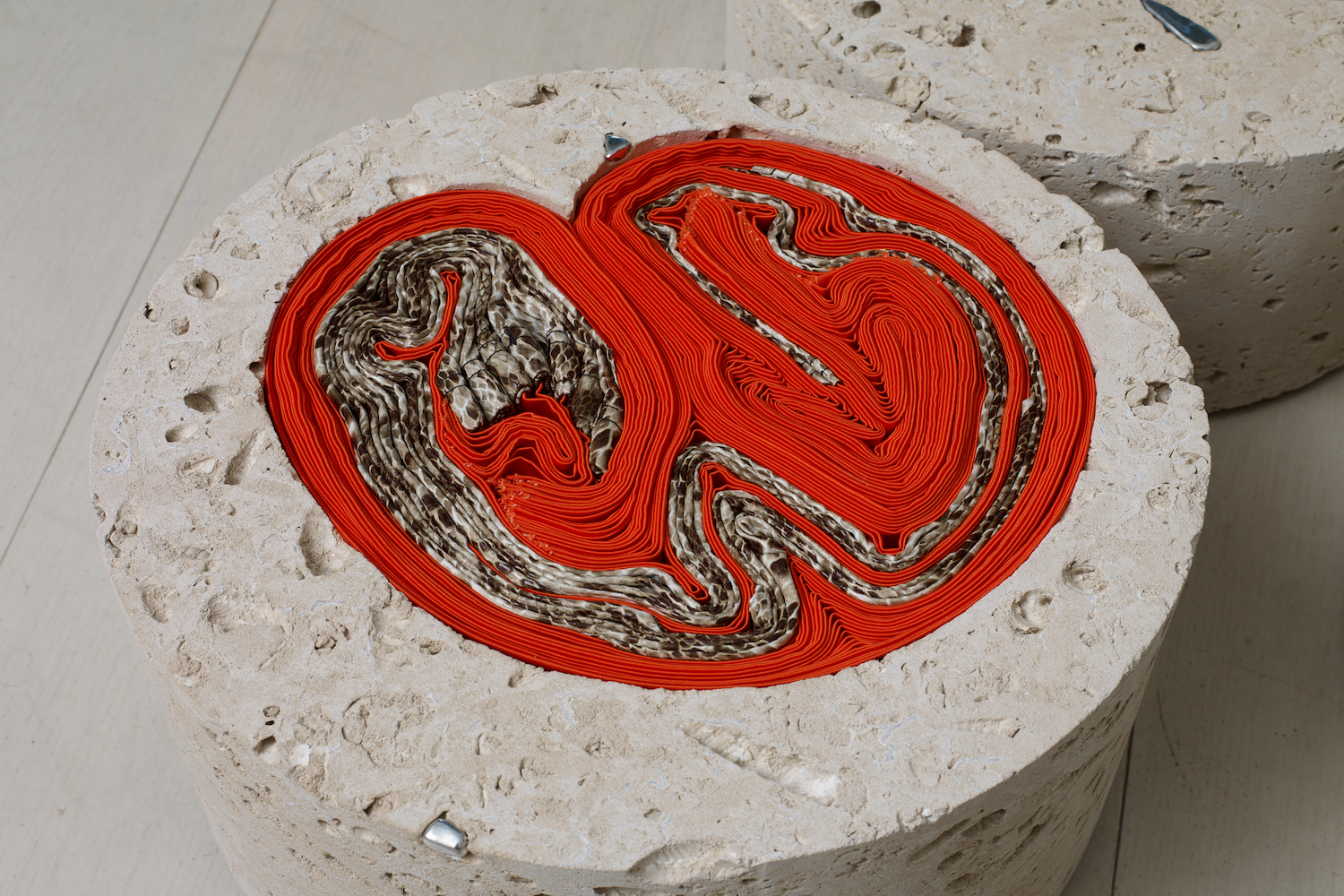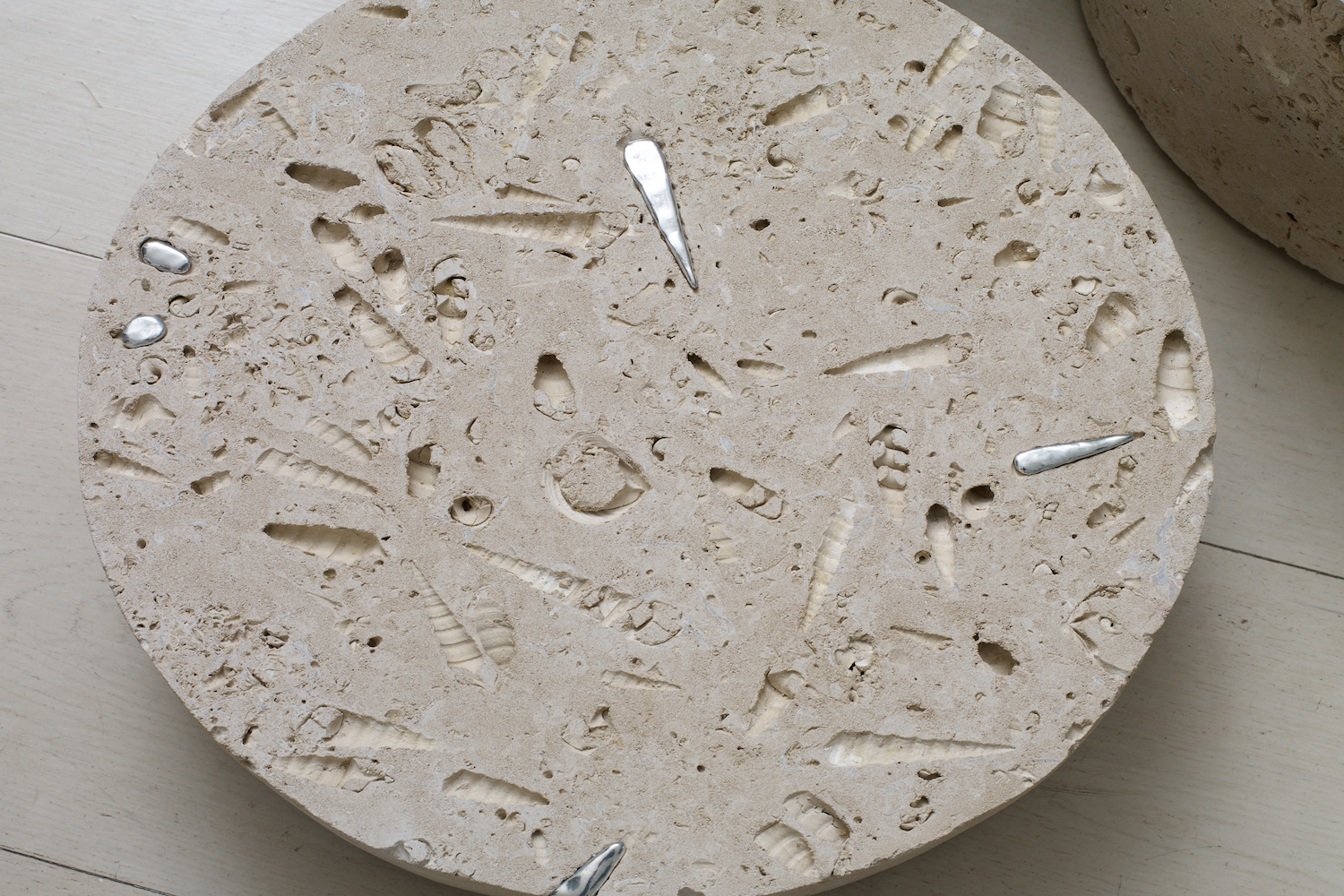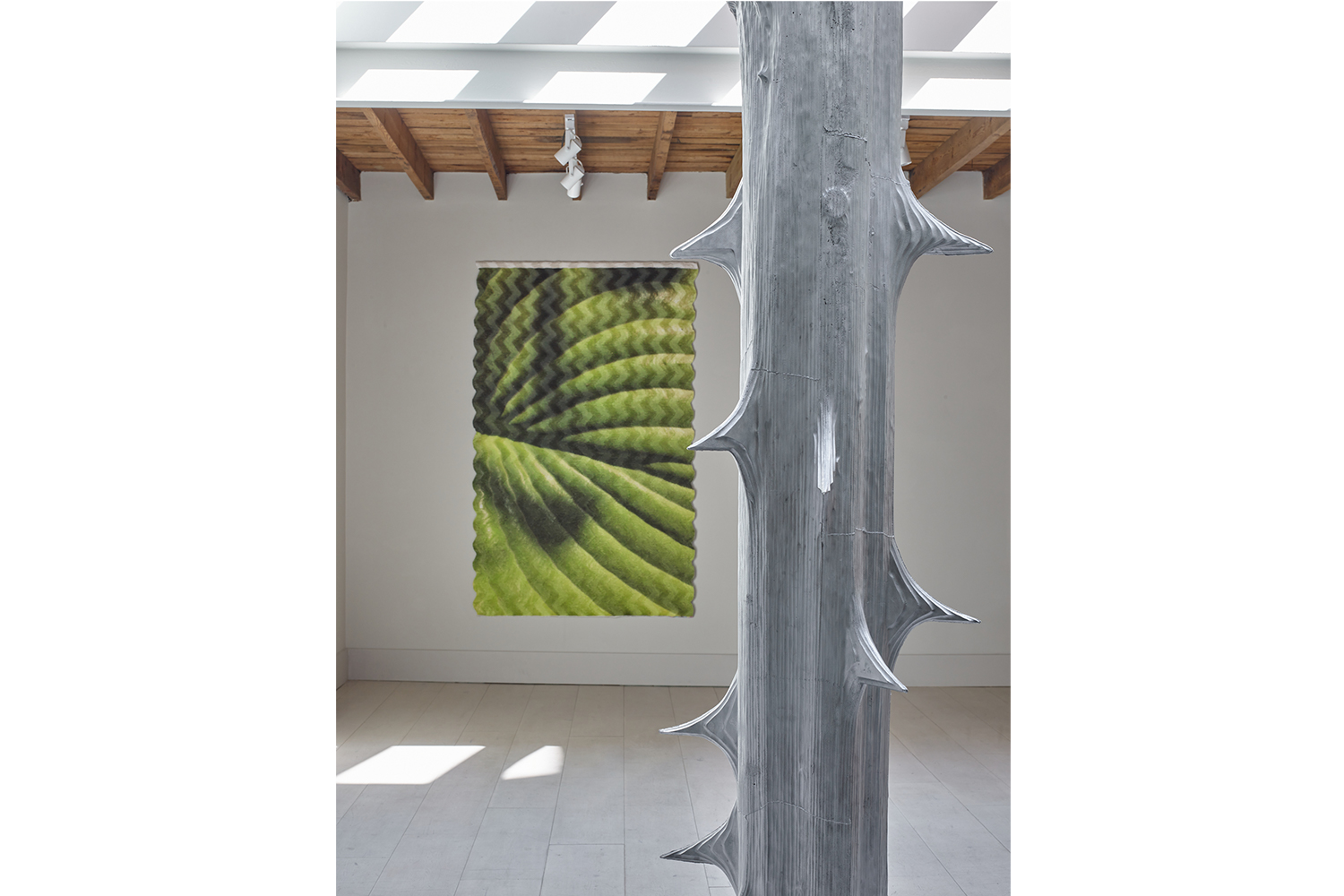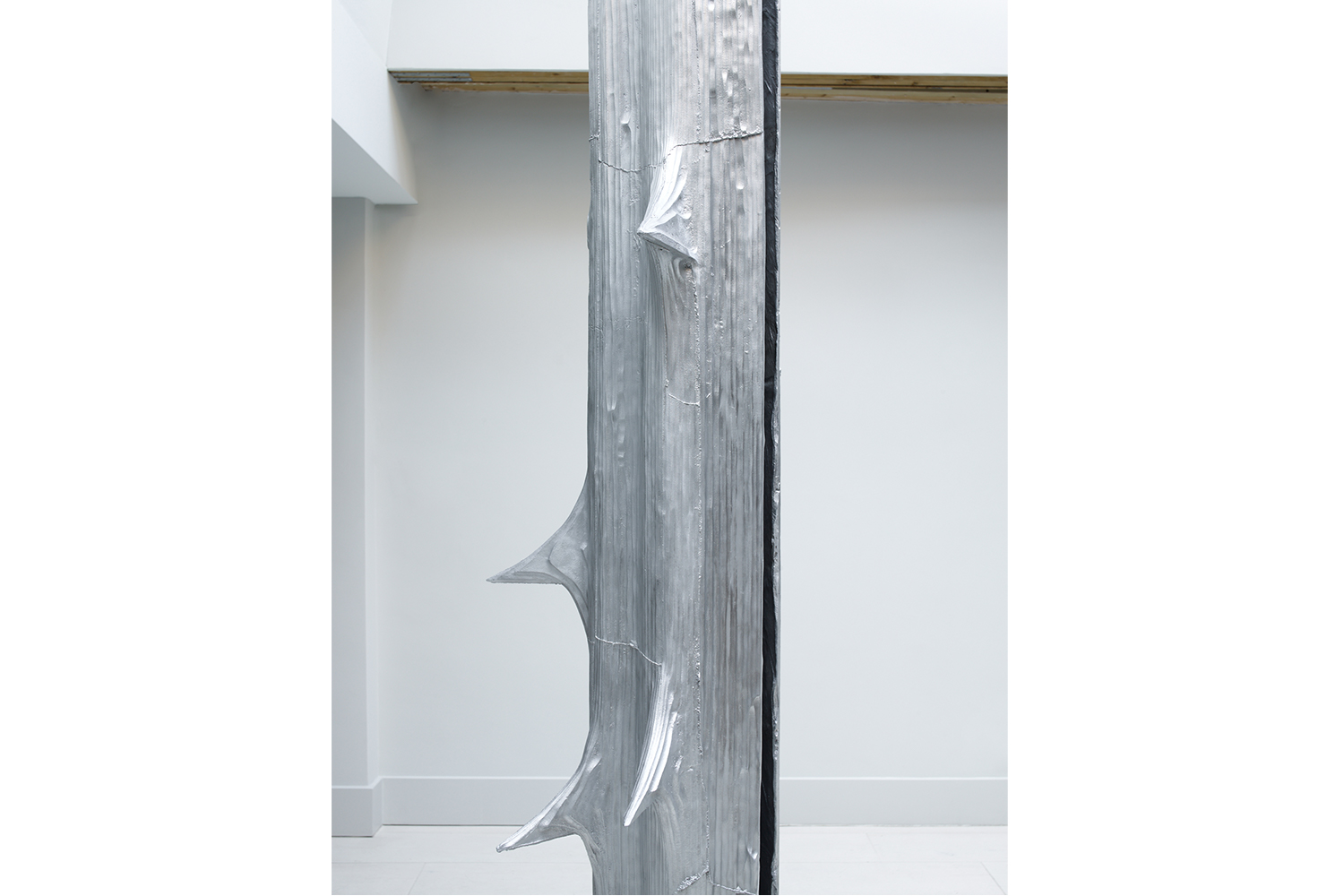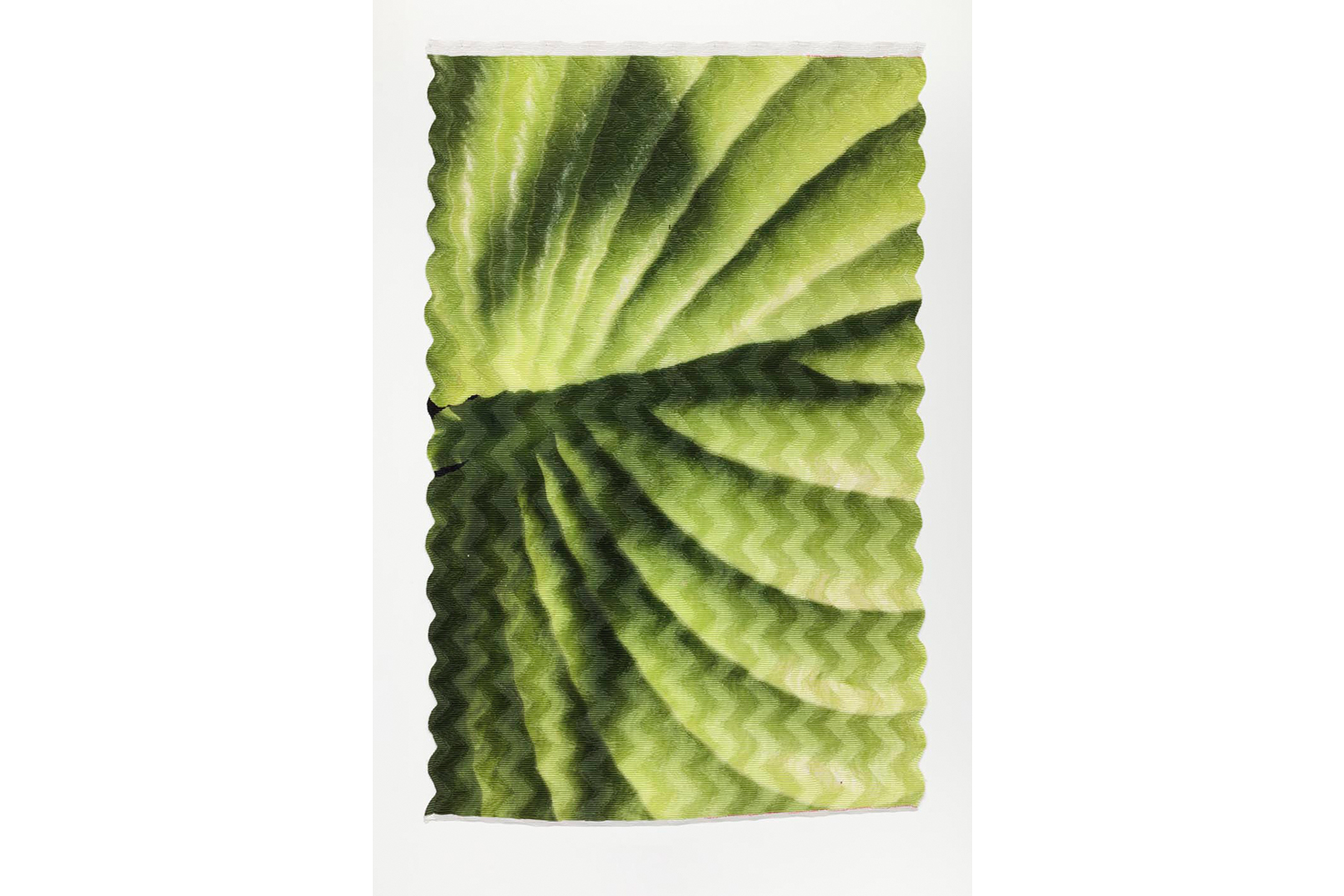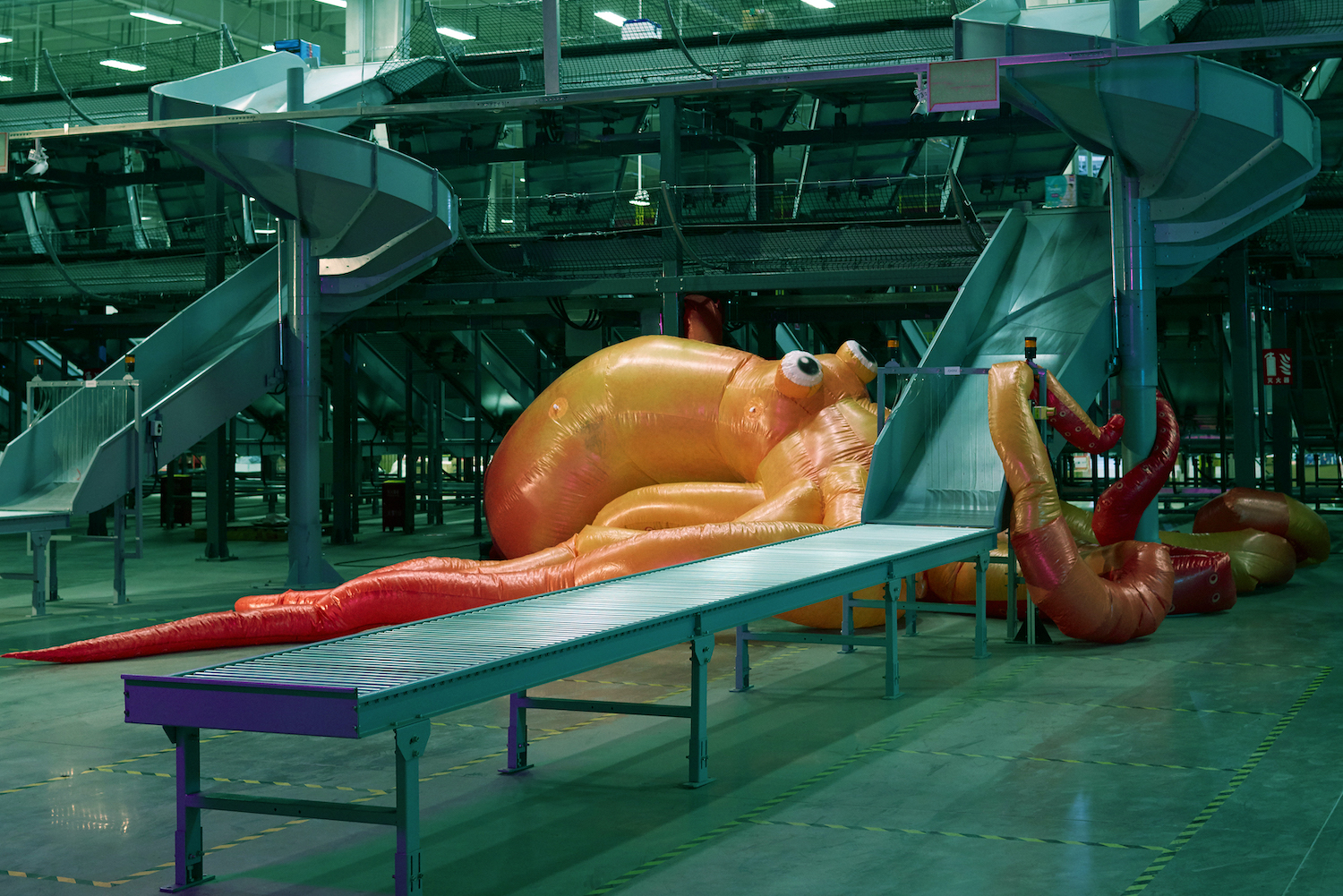The surfaces of Alice Channer’s sculptures actualize both evidence and emergence: evidence in their exposure of polyphonic, contaminating processes; and emergence in their protean being of experience. Each surface is a legible membrane of process left open and conductive — lightly charged, just begun.
Beginning, then, with the three round tablet stones of Biolith (2021). These ossified sponges are chambers of the formerly alive, a vermiform honeycomb of clamshells and furrowed ringlets of turreted snails. Argentine slicks of polished aluminum create puddles of visibility that catalyze attention, only for the eye to slip over their glow, momentarily quenched by pocketed reflection. Accordion-pleated crepe satin of lurid red and snakeskin print dramatizes one stone’s cavernulous substance. Here, the synthetic vermiculation is compressed in a kind of intensification of the sediment that frames it; the labyrinthine folds of its fabric are a cross section of some impossible bone. It is marrow prone to fraying, which keeps the uncanny sensory encounter in check; the minuscule fraying is the work’s awkward grounding.
This Biolith — the title denoting sediment produced by remnants of living organisms — is a pithy encapsulation of Channer’s ruching of logic, reversal, enfoldment, and elastication of infra-thin impressions and intermeshed bodies, skins dilating life-within-life. These porous indentations are like historic constellatory loyalties whose legibility is owed to compliant machinery. A thing that decays exteriorizes its interiorities, and those interiorities proliferate. How much less alive is this than myself, us?
Pleats recur in Elon Musk (2018), a low protrusion from the wall like a steel-bracketed fungus; it frames compacted rivulets of pewter lamé, which coil around an ammonite fossil. The seeming lightness of touch in this friction — a collapsed churning of whorls — is part of the elegance one associates with Channer’s work. But it is also activated by the derealizing capacity of glamour: transcending the material reality of its apparatus and existing as a diffuse quality. Glamour! That fascinating reservoir, ubiquitous yet elusive. It is something Channer has sought to “weaponize,” an endeavor that returns it to the apparatus. For instance: subjecting a carousel of crab carapaces to vacuum metallization, washing them in aluminum. If glamour mobilizes spellbinding deflection, Channer forces its confession, instructs its disguise. An atramentous thrill is the conjuring of primordial ammonite among the susurration of Teslaian technics, the perfume of Musk pressed into lamé’s alloyed scrollwork.
The slick schisms continue with chrome racks ornamented with nautilus shells (Nautilus, 2021) and a halo of gastropods (Beached, 2021), both “sand cast” and coated in “vapor-blasted aluminum,” as the list of materials reads. In Beached particularly, the effect is a surfacing of shells from a pit of metallized topsoil. The silver granularity becomes infinitesimally flocculent, revitalizing all its edges into petrified unrest, evident and emergent, as a washed-up filter of optical data. Megaflora (2021), the exhibition’s titular work, is a bramble stem extracted via 3-D scan, stretched vertically, carved from hard foam using computer numerical control (CNC), and sand cast in aluminum. Its gothic thorns transmogrify into denticulate barbs of a statuesque fluted stem combed with the cast’s glitter-grit. The transferals are multiple, of weight, material, texture, and scale, making the work feel less a shell of former life than a recalibration of ontological source. Megaflora’s verticality is partial; one can effectively see “within” the structure only to face a provocation of Channer’s project, that the sovereignty of the “inside” — as with the essentialism uttered in “the body” — is, like the silence of glamour and the fetish of autonomy, a sterile enterprise of human seduction.
A pairing of coral-pleated prints on silk satin depicts a detail from a magnified leaf. The exothermic greens and rubbery folds of the leaves are snagged by glitches of vibrational pleats, manifesting an oscillatory and strobing skin. Moult (2021), vinyl stretched across the gallery’s window, displays a cross section of the scanned bramble stem in cybernetic red; its gravelly pixels render it akin to viral microscopy or some abyssal, ragey crustacean. Container and content become an extruded, fusible surface entirely of interstitial chaos where the subcutaneous is shared and subject to ecstatic speculation. Megaflora is a tonic for pliable porosity: in molt, evolution.

